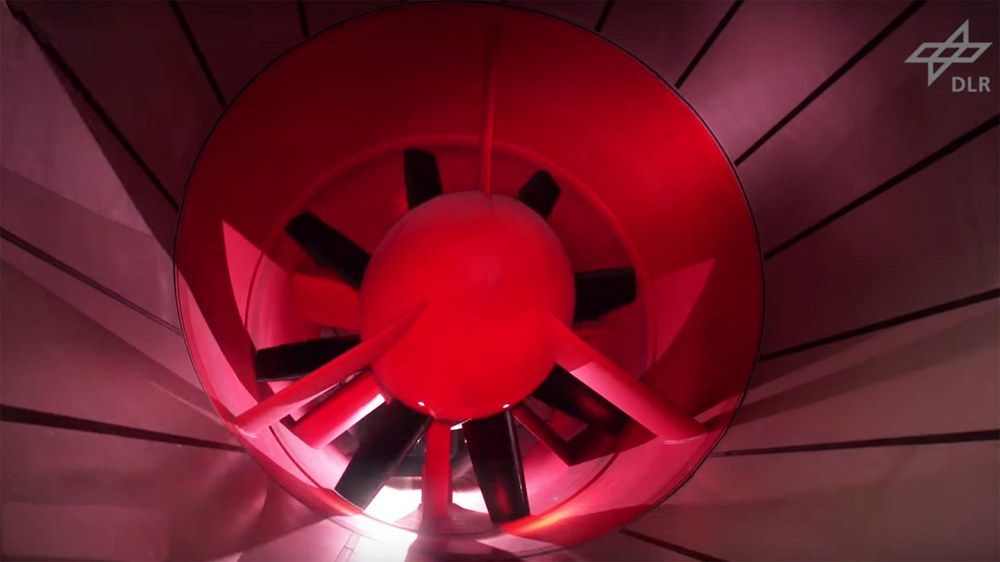DLR tests confirm Otto Lilienthal as the first ancestor of all aviators



German aviation pioneer Otto Lilienthal flew thousands of times, travelling up to 250 metres at speeds reaching 50 kilometres per hour, made him (quite rightly) the first confirmed pilot in human history. His fatal accident was not caused by a flawed design, but was most likely a pilot error. This at least is the result of studies presented by the German Aerospace Center (Deutsches Zentrum für Luft- und Raumfahrt; DLR) after conducting scientific investigations on the full-scale replica of the Lilienthal normal glider.
The wind tunnel tests were intended to honour the life's work of Otto Lilienthal, who became the first human being to take to the skies in an aircraft 125 years ago. The aerodynamic quality of the 20-kilogram lightweight glider with a wingspan of 6.7 metres was put to the test in one of the world's largest and most modern wind tunnels, the DNW-LLF in Emmeloord, the Netherlands. At the DLR site in Göttingen, the tests focused on determining the manoeuvrability, while DLR Braunschweig created a computer simulation of the glider.

Lilienthal glider project - Building replica of the world's first series-produced aircraft
Your consent to the storage of data ('cookies') is required for the playback of this video on Youtube.com. You can view and change your current data storage settings at any time under privacy.
DLR
Lilienthal's design was ahead of its time
The results amazed even the researchers. "It is astonishing to see the outstanding quality of the aircraft that Lilienthal built over a century ago, entirely without the modern equipment at our disposal today," said Rolf Henke, Member of the DLR Executive Board responsible for Aeronautics. "He was unable to use wind tunnels or computer simulations. But he knew what is important in aviation," Henke added. Lilienthal conducted systematic analyses of birds in flight and was the first person to recognise the benefits of a curved wing. To this day, aircraft are assessed based on criteria defined by Lilienthal, including drag and lift. "Lilienthal was the first aviation researcher, and we consider ourselves guardians of his legacy," said Henke. Lilienthal was also the first aircraft manufacturer: the model recreated by DLR, the so-called Normalsegelapparat – normal glider, was the first series aircraft ever built and at least nine were sold worldwide.
Andreas Dillmann, Head of the DLR Institute of Aerodynamics and Flow Technology and in charge of the scientific investigation, is thrilled. "The results of our investigations could be straight out of a textbook. Everything we measured matches the historical data precisely: how far he flew, how fast."
For instance, the calculated glide ratio of 3.6 means that an aircraft starting from a certain elevation can glide 3.6 times as far. "That matches the historical documents mentioning that Lilienthal flew 250 metres from the 70-metre elevation up on Gollenberg," said Dillmann.
"From an aerodynamic perspective it is an absolutely flawless construction, inherently stable in all flight ranges," Dillmann added. Aeronautical engineers describe aircraft as inherently stable if they return to aerodynamic balance on their own – even after drifting off course due to wind or a pilot error. This is the only way to ensure safe flight. In this respect, Lilienthal's design was even better than the flying machine constructed by the Wright brothers: "The aircraft designed by the Wright brothers proved unstable in all flight speeds during wind tunnel tests conducted by NASA," said the DLR researcher.
"The flight characteristics of the Lilienthal glider are equivalent to those of the typical training glider used during the 20s and 30s – designs that flew decades after Lilienthal," Dillmann added.
Unfavourable wind conditions were fatal
The tests conducted by researchers also revealed the limits of the glider's capacities: it only flew safely under certain conditions. "The glider would have stood up in the air if its nose rose too far. Then it would have become uncontrollable." This phenomenon may have led to Lilienthal's fatal accident on 9 August 1896, on a flight from Gollenberg near Stölln. Reports of Lilienthal's crash suggest that the warm gust of a thermal pushed the glider's nose upward until it hung almost perpendicular to the ground, where it remained briefly before tipping over to one side. The aviation pioneer was restricted in his ability to control the glider by leg movements. "Lilienthal's glider was airworthy and safe during favourable wind conditions or when flying into headwind. But it simply was not sufficiently manoeuvrable to cope with other wind conditions like the thermals around the time of his crash. Lilienthal should not have flown on the day of the accident."
Almost without exception, subsequent pioneers of aviation recognised and used Lilienthal's achievements, points out Bernd Lukasch, Director of the Otto Lilienthal Museum, which built the replica of the glider on behalf of DLR. "Even in 1905, Ferdinand Ferber from France cited 1891 as the year in which aviation history began," said Lukasch. The Wright brothers, who completed the world's first motorised flight in 1903, described Lilienthal as "without a doubt our greatest predecessor".
Note to editors:
You are welcome to download broadcast-quality TV footage from the DLR film archive.
